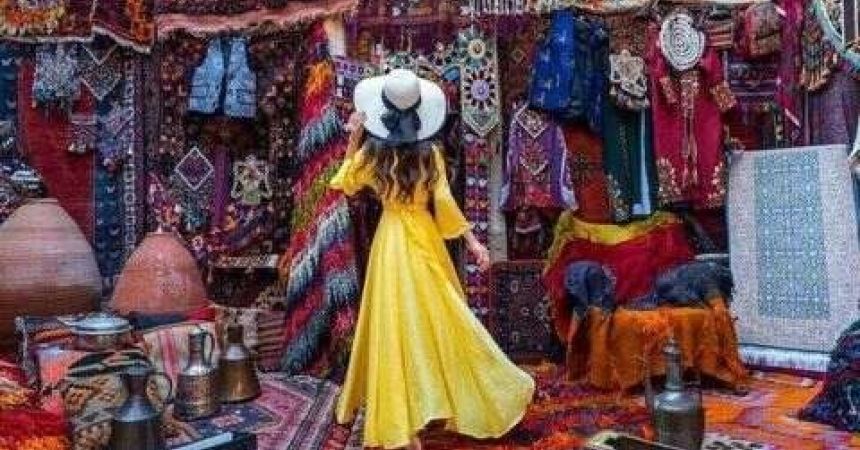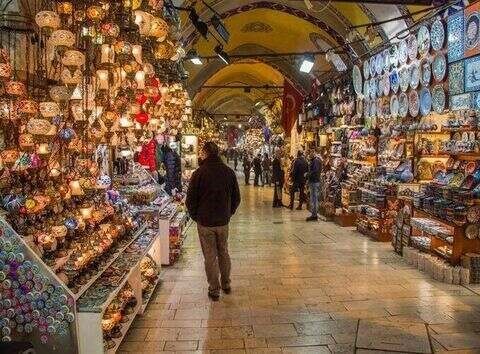
Turkish Rug Handicraft: Tradition and Beauty
Turkish rugs, renowned for their intricate patterns, rich colors, and historical significance, are much more than mere floor coverings; they are timeless works of art that embody centuries of cultural heritage and artisanal skill. This comprehensive guide explores the world of Turkish rug handicraft, delving into its history, techniques, regional variations, and cultural significance. Through this journey, you'll gain an appreciation for the artistry and craftsmanship that define Turkish rugs and understand why they continue to captivate collectors and enthusiasts worldwide.
The Historical Roots of Turkish Rug Handicraft
Origins and Historical Context
Turkish rug weaving has deep historical roots that trace back to the nomadic tribes of Central Asia. The art of rug making was carried by these tribes as they migrated westward into Anatolia, where it evolved into the distinct Turkish rug tradition we know today.
- Ancient Traditions: The earliest examples of rug weaving in Anatolia date back to the Seljuk period (11th to 13th centuries). These early rugs were characterized by geometric patterns and a sturdy construction suited to the nomadic lifestyle.
- Ottoman Influence: During the Ottoman Empire (14th to 20th centuries), Turkish rug weaving experienced a renaissance. The empire's vast reach brought influences from Persia, the Middle East, and Central Asia, blending these diverse styles into uniquely Turkish designs.
The Evolution of Turkish Rugs
Turkish rug weaving evolved through several distinct periods, each contributing to the rich tapestry of styles and techniques:
- Seljuk Rugs: Known for their geometric motifs and vibrant colors, these early rugs were primarily used in religious and royal settings.
- Ottoman Rugs: Ottoman rugs saw the introduction of more intricate floral and medallion patterns, reflecting the empire's opulent aesthetics.
- Contemporary Turkish Rugs: Modern Turkish rugs often incorporate traditional motifs with contemporary designs, catering to a global market.
The Craftsmanship Behind Turkish Rugs
Materials and Tools
The quality and beauty of Turkish rugs are largely determined by the materials and tools used in their creation.
- Wool: Most traditional Turkish rugs are made from high-quality wool, which provides durability and a rich texture. The wool is often sourced from sheep breeds that are specific to the region.
- Silk: For added luxury and sheen, some Turkish rugs incorporate silk. Silk rugs are typically used in formal settings and are more delicate than their woolen counterparts.
- Cotton: Cotton is sometimes used in the foundation of rugs, providing a softer texture and lower cost option.
Tools:
- Looms: Traditional Turkish looms are often vertical, known as “kilim looms,” which allow for the creation of flat-woven rugs. Horizontal looms are also used for pile rugs.
- Dyes: Natural dyes derived from plants, insects, and minerals are used to achieve the vibrant colors of Turkish rugs. Common natural dyes include indigo, cochineal, and madder root.
Weaving Techniques
Turkish rugs are created using various weaving techniques, each contributing to their unique appearance and texture.
- Knotted Pile Weave: This technique involves tying knots onto the rug’s warp threads to create a pile. The density and type of knots used (e.g., symmetrical or asymmetrical) affect the rug’s texture and pattern.
- Flat-Weave (Kilims): Kilims are woven using a technique that creates a flat surface without a pile. This method produces intricate patterns and is often used for smaller rugs or decorative pieces.
- Soumak Weave: This technique creates a textured, raised pattern by wrapping the weft threads around the warp threads in a specific manner. Soumak rugs often feature geometric designs.
Patterns and Designs
The patterns and designs of Turkish rugs are rich with symbolism and cultural meaning.
- Geometric Patterns: Early Turkish rugs, especially those from the Seljuk period, feature geometric patterns such as diamonds, triangles, and hexagons.
- Floral Patterns: Ottoman rugs introduced elaborate floral patterns, including motifs like carnations, tulips, and roses.
- Medallions and Symbols: Many Turkish rugs feature central medallions or symbolic motifs, which may represent elements of nature, spirituality, or historical significance.
Regional Variations in Turkish Rugs
Turkey’s diverse geography and cultural influences have given rise to distinct regional rug styles, each with its own characteristics.
Anatolian Rugs
Characteristics:
- Designs: Anatolian rugs are known for their bold geometric patterns and vivid colors.
- Materials: Typically made from wool, sometimes incorporating cotton or silk.
Notable Types:
- Kilim: Flat-woven rugs with geometric patterns, often used as wall hangings or floor coverings.
- Yastik: Smaller, decorative rugs with intricate patterns, often used as cushions or prayer rugs.
Turkish Rugs from the East
Characteristics:
- Designs: Rugs from Eastern Turkey often feature elaborate floral patterns and medallions.
- Materials: High-quality wool is commonly used, with some rugs incorporating silk.
Notable Types:
- Kars Rugs: Known for their geometric and tribal motifs, often using natural dyes.
- Van Rugs: Feature detailed designs with rich colors and intricate patterns.

Ottoman Rugs
Characteristics:
- Designs: Ottoman rugs are famous for their opulent floral patterns, medallions, and complex compositions.
- Materials: Often made from high-quality wool and silk.
Notable Types:
- Hereke Rugs: Renowned for their intricate designs and fine craftsmanship, often incorporating silk and featuring elaborate floral patterns.
- Bergama Rugs: Known for their distinctive medallion designs and vibrant colors.
The Cultural Significance of Turkish Rugs
Symbolism and Tradition
Turkish rugs are imbued with cultural and symbolic meanings that reflect the values and traditions of their creators.
- Symbolic Motifs: Many rug patterns have symbolic meanings, such as fertility symbols, protection motifs, and representations of natural elements.
- Ritual Use: Rugs have traditionally played a role in various rituals and ceremonies, including wedding celebrations and religious practices.
The Role of Rugs in Turkish Homes
- Cultural Identity: Rugs are an important part of Turkish cultural identity, often passed down through generations and used in various aspects of daily life.
- Decorative and Practical Uses: Rugs serve both decorative and practical purposes, providing warmth and comfort while also enhancing the aesthetic appeal of a space.
The Global Influence of Turkish Rugs
Turkish Rugs in International Markets
Turkish rugs have gained international recognition for their quality and artistry, with many rugs finding their way into homes and collections around the world.
- Collectibility: Antique Turkish rugs are highly sought after by collectors for their historical significance and craftsmanship.
- Market Trends: Modern Turkish rugs continue to evolve, with contemporary designs and techniques appealing to a global audience.
Preservation and Revival
Efforts are underway to preserve traditional rug-making techniques and revive interest in Turkish rug handicraft.
- Craftsmanship Schools: Various organizations and institutions are dedicated to teaching and preserving traditional rug-making techniques.
- Sustainable Practices: There is a growing emphasis on sustainable and ethical practices in the production of Turkish rugs, ensuring the longevity of the craft.
How to Care for Turkish Rugs
Cleaning and Maintenance
Proper care and maintenance are essential for preserving the beauty and longevity of Turkish rugs.
- Regular Vacuuming: Use a vacuum cleaner with a brush attachment to remove dust and debris. Avoid using beater bars or rotating brushes.
- Spot Cleaning: Address spills and stains promptly using a clean, dry cloth. For stubborn stains, seek professional cleaning services.
- Professional Cleaning: Periodic professional cleaning helps maintain the rug’s condition and appearance.
Storage and Preservation
- Avoid Direct Sunlight: Store rugs away from direct sunlight to prevent fading.
- Use Rug Pads: Place rug pads underneath to prevent slipping and reduce wear on the rug’s backing.
- Proper Storage: Roll rugs for storage, avoiding folding, and store them in a cool, dry place.
The Future of Turkish Rug Handicraft
Innovation and Tradition
The future of Turkish rug handicraft lies in balancing traditional techniques with modern innovation. Designers and artisans are exploring new ways to blend historical patterns with contemporary designs, ensuring the craft remains relevant in the global market.
Supporting Artisans
Supporting Turkish rug artisans and workshops helps preserve the craft and ensures that skilled artisans continue to pass down their knowledge and techniques to future generations.
Timeless Elegance: Turkish Rugs Explained
Turkish rug handicraft is a vibrant and intricate art form that embodies centuries of history, culture, and craftsmanship. From the ancient origins of rug weaving in Anatolia to the diverse regional styles and contemporary innovations, Turkish rugs continue to captivate with their beauty and significance. By understanding the history, techniques, and cultural importance of these exquisite textiles, you gain a deeper appreciation for the artistry involved and the timeless allure of Turkish rugs. Whether you are a collector, a connoisseur, or simply an admirer of fine craftsmanship, the world of Turkish rugs offers a fascinating journey to Turkey through tradition, creativity, and heritage.



